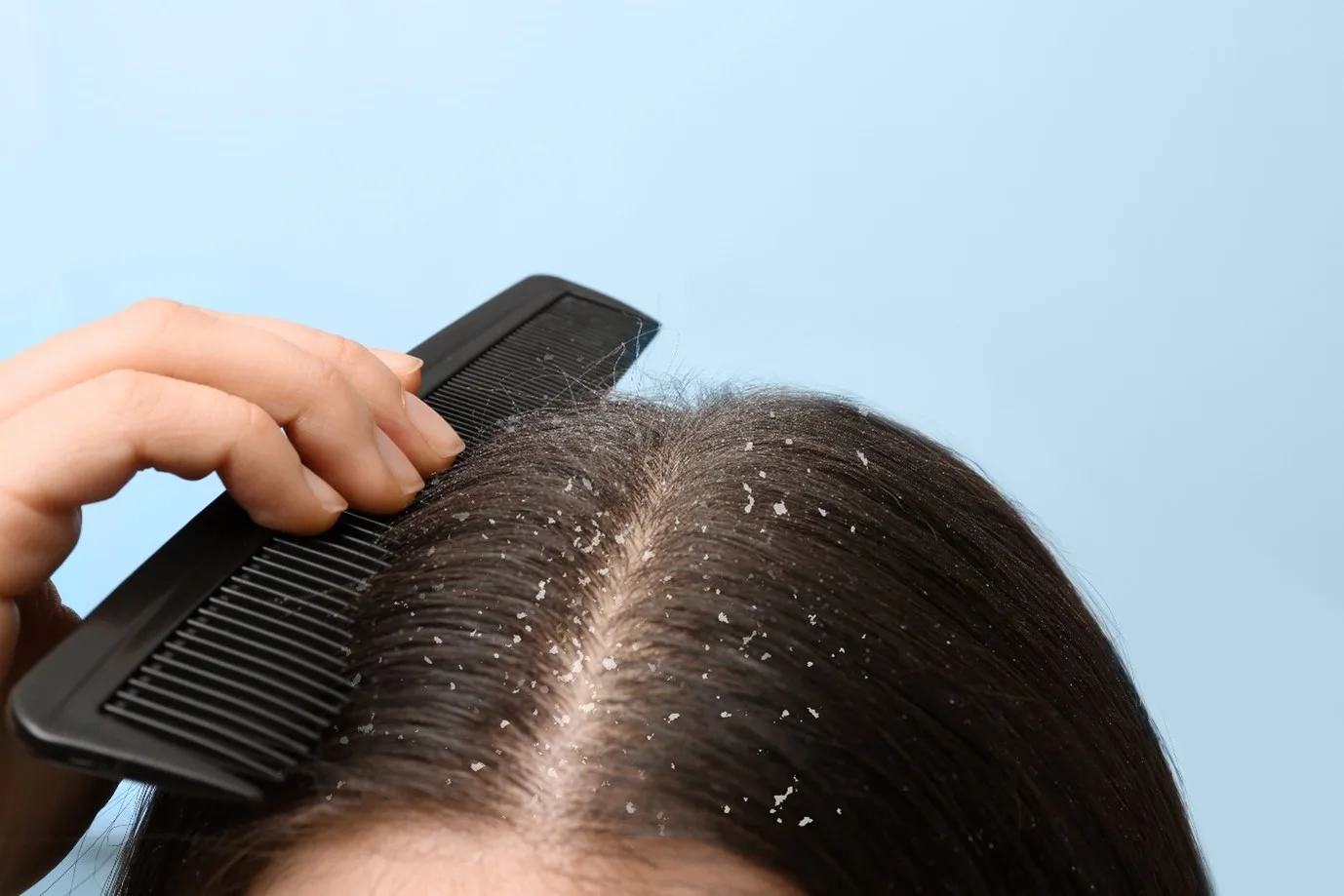IDENTIFY DIFFERENT TYPES OF DANDRUFF

Are there different types of dandruff? Find out more.
Dandruff is a common condition that causes flaky skin on the scalp. It can be considered as a mild form of a more serious skin condition known as Seborrheic Dermatitis. It may not be contagious or serious, but it can cause embarrassment and become difficult to handle. Mild dandruff can be treated with a gentle, daily shampoo but if that doesn’t work, a medicated scalp shampoo may be recommended. Some even try dandruff home remedies, but those have mixed results.
What are the causes and symptoms of dandruff?
What are the types of dandruff?
What are the causes and symptoms of dandruff?
Dandruff is usually caused by a fungus called Malassezia Globosa that feeds on the oils of your scalp. This fungus breaks down any oil build-up into fatty acids that you might be sensitive towards. It can cause a breakout of itching, scalp redness and flakes of dead skin cells. People often mistake it for dry skin dandruff and use solutions that are not meant for this problem.
It can potentially be aggravated by irritated or oily skin, not shampooing enough, dry skin, sensitivity to hair care products (contact dermatitis), or other skin conditions such as eczema.
Dandruff signs and symptoms may include skin flakes on your scalp, hair, eyebrows, beard, moustache, and shoulders. These tend to become severe when you are stressed or during the cold, dry winter season. You may even need to consult a dermatologist on how to remove dandruff, if your condition doesn’t improve with regular use of over-the-counter dandruff shampoo.
Almost anyone can have one of the different types of dandruff, but certain factors can make you more susceptible:
-
Age-
Dandruff usually begins in young adulthood and continues through middle age. -
Hormones-
Some researchers think male hormone may play a role in dandruff because more men have dandruff. -
Certain Illnesses-
Parkinson’s disease and other diseases that affect the nervous system may also cause dandruff. A weakened immune system also makes one more susceptible to dandruff.
-
Bad Hair Hygiene-
Improper hair washing routine, ordinary shampoo instead of an anti-dandruff shampoo, or not washing hair frequently can also result in dandruff.
What are the types of dandruff?
It is important to identify your ailment before deciding upon the course of treatment. Here are a few types of dandruff and suggested solutions:
-
Dandruff Caused by Fungus
Fungal Malassezia is a natural component found on the skin and scalp. This fungus survives on excessive scalp oil and produces oleic acid as a by-product. This in turn causes a build-up of skin cells, which fall down as white flakes. Try Head & Shoulders Neem shampoo which can give you up to 100% dandruff free hair, getting rid of visible flakes with regular use. -
Dandruff Caused by Oily Hair
Oil related dandruff happens when there is an accumulation of sebum oil on your scalp. Secreted by the scalp glands, this oil can form clumps of dead skin cells and dirt forming itchy flakes. Stress and anxiety levels can cause high level of sebum oil secretion leading to the condition. Try our Head and Shoulders Lemon Fresh shampoo, that treats oily hair and scalp with a fresh, vibrant fragrance. It is formulated with Head and Shoulders anti-dandruff formula that goes to the root of dandruff and leaves hair up to 100% dandruff free* -
Dandruff Caused by Psoriasis
Psoriasis can affect your scalp, in addition to other parts of your body, and the red, scaly patches that it causes can flake off like dandruff does. It can sometimes be mistaken for dry skin dandruff but is far from it. Psoriasis is an autoimmune disease that causes a build-up of skin cells, leading to scaly skin. Unfortunately there is no cure for Psoriasis, but you can control the symptoms. You can reduce your exposure to any triggers or use medicated shampoos, gels, ointments to reduce the impact of this skin ailment. -
Dandruff Caused by Seborrheic Dermatitis
Seborrheic Dermatitis is a common skin condition that mainly affects your scalp. It causes scaly patches, red skin, and stubborn dandruff. Daily cleansing with a gentle soap and shampoo can help reduce oiliness and dead skin build up. Seborrheic Dermatitis is also called dandruff, seborrheic eczema, and seborrheic psoriasis.
Symptoms and signs may include - red skin, itching, and flakes on eyebrows, scalp, hair, beard or moustache. Since the causes are similar to regular dandruff, some people try anti dandruff shampoos to control the symptoms. You can try the Head and Shoulders Active Protect shampoo and see if it helps. If not, visit a dermatologist.
-
Eczema Dandruff
The shedding of white flakes is the most noticeable symptom of scalp eczema. This is an inflammatory skin condition that causes rashes, scaly skin, itching, and sores. It is often categorised as one of the many types of dandruff due to the flaking, but is more commonly found. It can be a stubborn condition that may persist for years. It can come and go without warning, and it can disappear on its own. Symptoms of scalp eczema can be effectively managed, but this condition cannot be cured completely.
Dandruff is a frustrating problem to have, but if you listen to the experts and take care of your hair hygiene, you can stop it from ever troubling you again.



